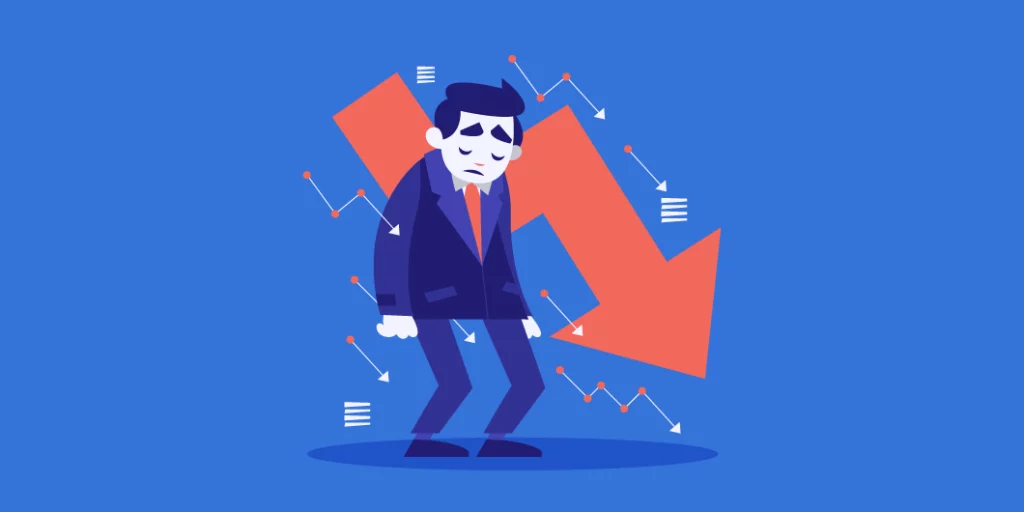
What Is Stagflation? Causes, Effects, and Solutions
Stagflation is one of the trickiest economic conditions to deal with. It’s when high inflation, slow economic growth, and high unemployment happen at the same time. This unusual mix creates a tough situation for governments, businesses, and individuals. Unlike typical inflation or a regular recession, stagflation is especially challenging because the usual tools to fix one problem can make the other ones worse.
In this article, we’ll explain what this is, what causes it, its impact on the economy, and what can be done to tackle it.
What Is Stagflation?
Stagflation is the combination of two opposing economic problems: stagnation (slow or no economic growth) and inflation (rising prices). Normally, inflation and stagnation don’t go hand in hand. Inflation typically rises when the economy is growing fast, while stagnation usually occurs when the economy is shrinking. But in stagflation, both problems happen at once, which creates a real headache for policymakers.
Key Signs of Stagflation
- High Inflation: Prices rise on everyday goods, making things more expensive for consumers.
- Slow or Negative GDP Growth: The economy is weak or shrinking, which means fewer job opportunities and limited business growth.
- High Unemployment: Even though prices are rising, many people are out of work or facing stagnant wages.
Causes of Stagflation
There are a few main reasons why stagflation happens. Understanding these can help investors and policymakers navigate this tough environment.
Supply Shock
A supply shock happens when there’s a sudden disruption in the supply of critical goods, such as oil or food. For example, the 1970s oil crisis caused a sharp rise in energy prices, which led to inflation while economic growth stalled. This kind of shock pushes up production costs and triggers higher prices, slowing down the economy.
Poor Economic Policies
Sometimes, poor economic policies can trigger stagflation. For instance, when governments print too much money to stimulate the economy, it can lead to inflation without boosting growth. Similarly, if governments don’t address underlying economic problems, they might inadvertently create the conditions for stagflation.
Declining Productivity
When productivity falls, the cost of goods and services rises, contributing to inflation. Poor infrastructure, outdated technology, or a lack of investment can slow down productivity. When businesses can’t produce goods efficiently, they raise prices to cover costs, while economic growth suffers.
Effects of Stagflation on the Economy
Stagflation is tough on everyone. Here’s how it affects different parts of the economy:
Impact on Consumers
Consumers feel the pinch most during stagflation. Prices for essentials like food and gas go up, but wages don’t keep pace. This means people’s purchasing power shrinks, making it harder to afford the same goods and services. The cost of living rises while job opportunities remain limited, making it harder for families to make ends meet.
Impact on Businesses
Businesses also struggle during stagflation. As production costs rise, companies may be forced to raise prices to maintain profits. But with consumers spending less due to high prices and weak economic growth, demand for products drops. This leads to a vicious cycle of reduced hiring, layoffs, and even business closures.
Impact on Government Policies
Governments face a tricky challenge during stagflation. To fight inflation, they may raise interest rates, but doing so could further slow economic growth and increase unemployment. On the other hand, cutting interest rates to boost growth could make inflation worse. The need to balance these two goals makes dealing with stagflation particularly challenging.
Historical Examples of Stagflation
The 1970s Stagflation Crisis
The most famous example of stagflation occurred in the 1970s. It was caused by an oil supply shock, where rising oil prices drove up the cost of production for many goods, leading to inflation. At the same time, the economy stalled, and unemployment rose. Inflation hit double digits, and the economy remained weak for years. Governments eventually had to shift economic policies to try to control both inflation and unemployment.
Stagflation Risks in the 2020s
Today, some economists are worried that the world might face stagflation again. Factors like rising energy prices, disruptions in global supply chains, and high debt levels are creating similar conditions to the 1970s. While it’s still uncertain if we’ll see the same level of stagflation, the combination of high inflation and slow growth is something to keep an eye on.
How to Fight Stagflation?
So, how can stagflation be tackled? Here are some solutions that might help:
Monetary Policy Adjustments
Central banks can adjust interest rates to try and control inflation. However, this is tricky during stagflation because raising interest rates to fight inflation can slow down the economy even more. A careful balance is needed to avoid worsening the situation.
Supply-Side Economic Policies
Supply-side policies focus on improving the efficiency of the economy. This could mean investing in new technologies, improving infrastructure, or encouraging businesses to increase production. When businesses can produce goods more efficiently, costs go down, helping reduce inflation.
Energy and Resource Management
Managing energy prices and resources is key to preventing stagflation caused by supply shocks. Governments need to secure stable energy supplies and consider alternative energy sources to reduce dependency on volatile resources like oil.
Stagflation is a rare but dangerous condition that combines inflation, slow growth, and high unemployment. It can be caused by supply shocks, poor economic policies, and declining productivity, and it can have a major impact on consumers, businesses, and governments. The 1970s oil crisis is a prime example, and while we may not face the exact same conditions today, there are certainly risks of stagflation in the current economic climate. To tackle stagflation, policymakers need to balance controlling inflation with fostering growth, while addressing the root causes of the economic slowdown.